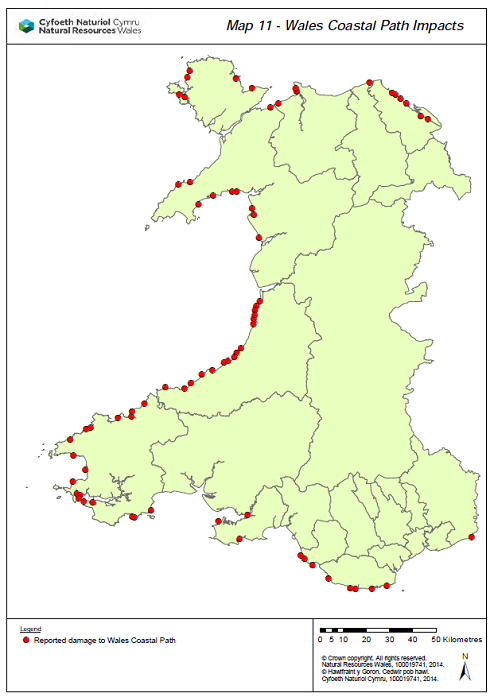Article by Gareth Jenkins, National Assembly for Wales Research Service
The Wales Coast Path (WCP), provides foot access to the entire Welsh coastline (85 per cent which is designated for its environmental importance). The Path has recently passed its two year anniversary, which was marked by a celebration on Southerndown Beach, Vale of Glamorgan. It joins Queensferry, Flintshire to Chepstow, Monmouthshire via 870 miles of coastal path. Existing schemes, such as the Pembrokeshire Coastal Path National Trail, Glamorgan Heritage Coast and Isle of Anglesey Coastal Path, have been joined together by 50 miles of new public access. The WCP made Wales the first country in the world to have a continuous public route around its entire coast line, and it was included as the top location in Lonely Planet’s Top Ten Regions for 2012, along with globally recognised tourism locations such as Kenya and Sicily. The statistics from the WCP website hit rate indicate that 152,000 visits were made to the official website, with hits from countries such as the USA, Germany, Canada, the Netherlands and Australia all recorded over 1000 times. In November 2013 the WCP commissioned a report to analyse the economic impact of the path. The report covered data available up to September 2013 and, revealed that 2.8 million visitors have used the Path in some capacity during that timeframe. While over half of those were day visitors travelling from home, over a third of visitors were using the Path as part of a longer holiday. The Bridgend section is estimated to have received the most traffic (666,625 visits), and the Conwy section the least (3,456 visits). The report concluded that WCP has brought £32.3 million of economic benefits to Wales exceeding the target of £10.54 million. In addition, it has created 815 full/part-time jobs through initial capital spending, which has led to 41 jobs (equivalent to 28.2 full-time employees) supported by the WCP. In total, the report estimates that this has created 715 person-years of employment. However, the success of the Path has faced challenges recently, as a consequence of extreme winter weather patterns hitting Britain this winter; some of the worst storm events in 20 years. This unusually severe weather impacted on the Welsh coast in particular and significant damage was caused in Cardigan Bay. As a result, there have been a number of interruptions and diversions to the coast path. Natural Resources Wales released reports in February and April 2014 that outlines damage to over 70 locations on the Path (see Figure below), with repair costs to date estimated at £340,000. Stretches of the Path have been diverted and/or closed in Flintshire, Denbighshire, Conwy, Anglesey, Gwynedd, Ceredigion, Carmarthenshire, Swansea and Bridgend.  In response to the storm damage the Welsh Government has announced that it will provide the coastal local authorities with £545,000 in funding in order to specifically repair coastal storm damages to the WCP. This is in addition to the £1.15 million invested in 2013/14 for general upkeep. The Welsh Government has invested up to £2 million per year in the Path between 2007 and 2013, which has been supplemented by European Regional Development Funds of £3.9 million between 2009 and 2013.
In response to the storm damage the Welsh Government has announced that it will provide the coastal local authorities with £545,000 in funding in order to specifically repair coastal storm damages to the WCP. This is in addition to the £1.15 million invested in 2013/14 for general upkeep. The Welsh Government has invested up to £2 million per year in the Path between 2007 and 2013, which has been supplemented by European Regional Development Funds of £3.9 million between 2009 and 2013.






